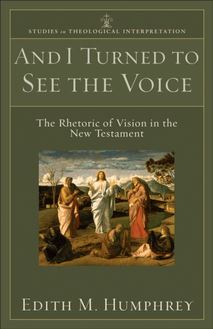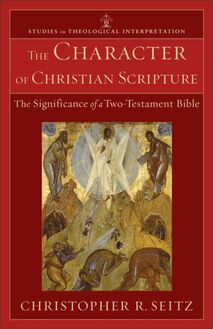-
 Univers
Univers
-
 Ebooks
Ebooks
-
 Livres audio
Livres audio
-
 Presse
Presse
-
 Podcasts
Podcasts
-
 BD
BD
-
 Documents
Documents
-
- Cours
- Révisions
- Ressources pédagogiques
- Sciences de l’éducation
- Manuels scolaires
- Langues
- Travaux de classe
- Annales de BEP
- Etudes supérieures
- Maternelle et primaire
- Fiches de lecture
- Orientation scolaire
- Méthodologie
- Corrigés de devoir
- Annales d’examens et concours
- Annales du bac
- Annales du brevet
- Rapports de stage
La lecture à portée de main
Vous pourrez modifier la taille du texte de cet ouvrage
Découvre YouScribe en t'inscrivant gratuitement
Je m'inscrisProphecy and Hermeneutics (Studies in Theological Interpretation) , livre ebook
Découvre YouScribe en t'inscrivant gratuitement
Je m'inscrisEn savoir plus
Vous pourrez modifier la taille du texte de cet ouvrage
En savoir plus

Description
Informations
| Publié par | Baker Publishing Group |
| Date de parution | 01 août 2007 |
| Nombre de lectures | 0 |
| EAN13 | 9781441201676 |
| Langue | English |
Informations légales : prix de location à la page 0,0691€. Cette information est donnée uniquement à titre indicatif conformément à la législation en vigueur.
Extrait
P ROPHECY AND H ERMENEUTICS
STUDIES in THEOLOGICAL INTERPRETATION
Series Editors
Craig G. Bartholomew Redeemer University College
Joel B. Green Asbury Theological Seminary
Christopher R. Seitz Wycliffe College, University of Toronto
Editorial Advisory Board
Gary Anderson University of Notre Dame
Markus Bockmuehl University of St. Andrews
Richard Hays Duke University Divinity School
Christine Pohl Asbury Theological Seminary
Eleonore Stump Saint Louis University
Anthony Thiselton University of Nottingham University of Chester
Marianne Meye Thompson Fuller Theological Seminary
Kevin Vanhoozer Trinity Evangelical Divinity School
John Webster University of Aberdeen
Jim Kinney Baker Academic
P ROPHECY AND H ERMENEUTICS
Toward a New Introduction to the Prophets
C HRISTOPHER R . S EITZ
2007 by Christopher R. Seitz
Published by Baker Academic a division of Baker Publishing Group P.O. Box 6287, Grand Rapids, MI 49516-6287 www.bakeracademic.com
Printed in the United States of America
All rights reserved. No part of this publication may be reproduced, stored in a retrieval system, or transmitted in any form or by any means-for example, electronic, photocopy, recording-without the prior written permission of the publisher. The only exception is brief quotations in printed reviews.
Library of Congress Cataloging-in-Publication Data
Seitz, Christopher R. Prophecy and hermeneutics : toward a new introduction to the prophets / Christopher R. Seitz. p. cm. - (Studies in theological interpretation) Includes bibliographical references ISBN 10: 0-8010-3258-X (pbk.) ISBN 978-0-8010-3258-5 (pbk.) 1. Prophecy-Christianity-Biblical teaching. 2. Prophets-Biblical teaching. 3. Bible. O.T. Isaiah-Criticism, interpretation, etc. 4. Bible. O.T. Minor Prophets-Criticism, interpretation, etc. I. Title. BS1505.52.S45 2007 224 .06-dc22
2007009757
Scripture translations are by the author.
C ONTENTS
Preface: Explanation and Orientation
Introduction: Prophecy Reconfigured
1 What Is an Introduction to the Prophets?
Part 1 The Overreach of History-Figuring the Prophets Out
2 The Prophets as a Discrete Phenomenon
3 The Eclipse of Biblical Prophecy
4 Prophetic Associations in the Canonical Form
5 The Prophets Reconfigured
Part 2 Time in Association-Reading the Twelve
6 Prophecy and Tradition-History: The Achievement of Gerhard von Rad
7 Prophecy and History: The Book of the Twelve as History
8 Prophecy and Hermeneutics: Canonical Reading and Hermeneutical Reflections
Conclusion
P REFACE Explanation and Orientation
T his is a book about the prophets and the way the introduction to the prophets emerged in the first place and then evolved. It focuses on the challenge of handling the temporal character of prophecy appropriate to its canonical presentation. As such, the very definition of what we mean by history is at stake. At the heart of history lies a figure, Jesus Christ. His manifestation is anticipated in Israel in crucial ways. Understanding his place in time-our time right now-requires a full appreciation of the way he is prefigured in God s life with and witness within Israel. And here the prophetic legacy is central to grasping this witness.
In the chapters to follow I will repeatedly use the term figural , for which some explanation should be given here. I have begun with a focus on a single figure, at the center of time. Given the rise of critical method, and in the light of new ways of assessing history and interpretation, more must be said. The prophetic witness is crucial in this regard. It presents a special challenge because it is invested in an account of time as in God s hand and as accomplished by his word. We will fail to understand Jesus Christ as the word of God unless we understand his accomplishment in Israel.
The term figural entails a literary dimension , that is, the way that prophetic materials have been intentionally related to one another by known and unknown authors, editors, and tradents-terms that within the context of the Old and New Testaments have their own distinctive character, as over against modern analogues. Original utterances, in literary form, have occasioned cross-references and a wider field of association, to which they now belong and within which meaning is generated. The prophetic word accomplishes, and that literary accomplishment can be studied carefully and understood, if only provisionally and only with great patience. This literary dimension might also be called configural, or an act of configuration.
Because this activity takes place across time, it has a historical , diachronic , and temporal dimension . The theological conviction undergirding literary configuration is that God is acting consistently and comprehensibly across time. Prophets see his hand at work and hear him speak. Through this medium, and because the speech is that of the author of time, God continues to speak and inspire hearing. Associations are configured not just because we can see them by closely studying their literary manifestation. They are there because God intends to make them speak of his ways through time. The times are in his hand, and the prophetic word manifests this temporal, historical movement. History is the term we frequently use to describe, by appeal to an external grid of association, how the biblical materials can be rearranged, so as to reconstruct their movement from earliest to latest developmental moments. But understood by attention to the figural character of prophetic speech, the term history will here refer to the achievement of the biblical witness in its final literary form, as the temporal dimension of God s work is set forth.
Figural has been chosen as the term of reference for other reasons, involving the history of recent biblical scholarship . It had become popular to contrast something called the plain or historical sense with further senses called fuller, typological, or even allegorical (when that was not being dismissed as nonsense). On this understanding, a fuller sense was a spiritual sense, somehow linked to an intention not directly that of an author (understood as historically reconstructed). An allegorical sense was contrasted with a typological sense on the grounds that the latter was an extension of a historical intention, while the former was divorced from this. It belonged, rather, to a field of association distinct from historical linkage and even opposed to it. Perhaps it was a reader imposition (to use the jargon of our day), or simply the product of external reflection, tied up with various spiritual concerns (moral life, final purpose, contemplative growth). On these grounds, typology was thought far more corrigible for integration with the now-popular historical-critical method and so was finding fresh commendation. Allegory remained the tough opponent of, or incorrigible interpretative practice of, modern historical reading. When one considers that for Thomas Aquinas the literal sense is the spiritual sense and that the historical sense apart from this is an attenuated or artificially enclosed sense, it is clear how far the terms have been stretched and altered in the modern period.
More recently, from a wide variety of directions, the sharp distinction between typology and allegory has been shown to be overdrawn, overly optimistic in respect of integration with historical-critical methods, and false in its handling of distinctions in the history of the Bible s reception in church, synagogue, and culture, especially in the early period. To avoid this confusion and to preserve as unprejudiced that dimension of modern historical reading capable of useful incorporation, I have favored the term figural .
Figural interpretation seeks to comprehend the character of God s work with Israel, with Jesus Christ, and with the church, on the grounds that such a work is patient of understanding, has been providentially intended and overseen, and exists at a dimension only anticipated by modern inquiry into authorial intention. This inquiry so focused on an original author and subsequent tradition-historical elaboration as to bypass the legacy of configured witness now provided in the final form of the canon. The interpretative horizon of canonical reading is not merely formal characteristics of association or lists of books or matters of closure and stabilization, far removed from history and historical reference. Canonical reading is a species of historical reading, and as such it raises questions about what is meant by history.
The first part of the present work seeks to understand those historical forces in the last two centuries of interpretation that have given rise to the introduction to the prophets in the form in which we recognize it. My concern is to plot the way that specific theological questions of high moral urgency-tied up with prophecy and fulfillment, the relationship between the Testaments, what is meant by prophecy as a word to the future-began to recede in importance precisely to the degree to which the term history became considerably thinned out. The project of understanding the prophet s word in time became a major preoccupation, but what of the prophet s word as generating and describing time in a larger sense and as presented by the canonical witness in its given form (Isaiah or the Twelve)? It is my conviction that this dimension is also historical, even as we now struggle to understand it, due to the ascendancy of another use of the term (focused on what Hans Frei calls ostensive reference ).
A study in theological interpretation is just that, or so this present work believes. It is a study into the way that theological interpretation-in this case, theological interpretation of the prophets-has been undertaken, modified, challenged, reconceived, and now reconsidered from a canonical perspective, so as to intimate a new form of introduction to the prophets.
Those more anxious to see the newer
-
 Univers
Univers
-
 Ebooks
Ebooks
-
 Livres audio
Livres audio
-
 Presse
Presse
-
 Podcasts
Podcasts
-
 BD
BD
-
 Documents
Documents
-
Jeunesse
-
Littérature
-
Ressources professionnelles
-
Santé et bien-être
-
Savoirs
-
Education
-
Loisirs et hobbies
-
Art, musique et cinéma
-
Actualité et débat de société
-
Jeunesse
-
Littérature
-
Ressources professionnelles
-
Santé et bien-être
-
Savoirs
-
Education
-
Loisirs et hobbies
-
Art, musique et cinéma
-
Actualité et débat de société
-
Actualités
-
Lifestyle
-
Presse jeunesse
-
Presse professionnelle
-
Pratique
-
Presse sportive
-
Presse internationale
-
Culture & Médias
-
Action et Aventures
-
Science-fiction et Fantasy
-
Société
-
Jeunesse
-
Littérature
-
Ressources professionnelles
-
Santé et bien-être
-
Savoirs
-
Education
-
Loisirs et hobbies
-
Art, musique et cinéma
-
Actualité et débat de société
- Cours
- Révisions
- Ressources pédagogiques
- Sciences de l’éducation
- Manuels scolaires
- Langues
- Travaux de classe
- Annales de BEP
- Etudes supérieures
- Maternelle et primaire
- Fiches de lecture
- Orientation scolaire
- Méthodologie
- Corrigés de devoir
- Annales d’examens et concours
- Annales du bac
- Annales du brevet
- Rapports de stage












